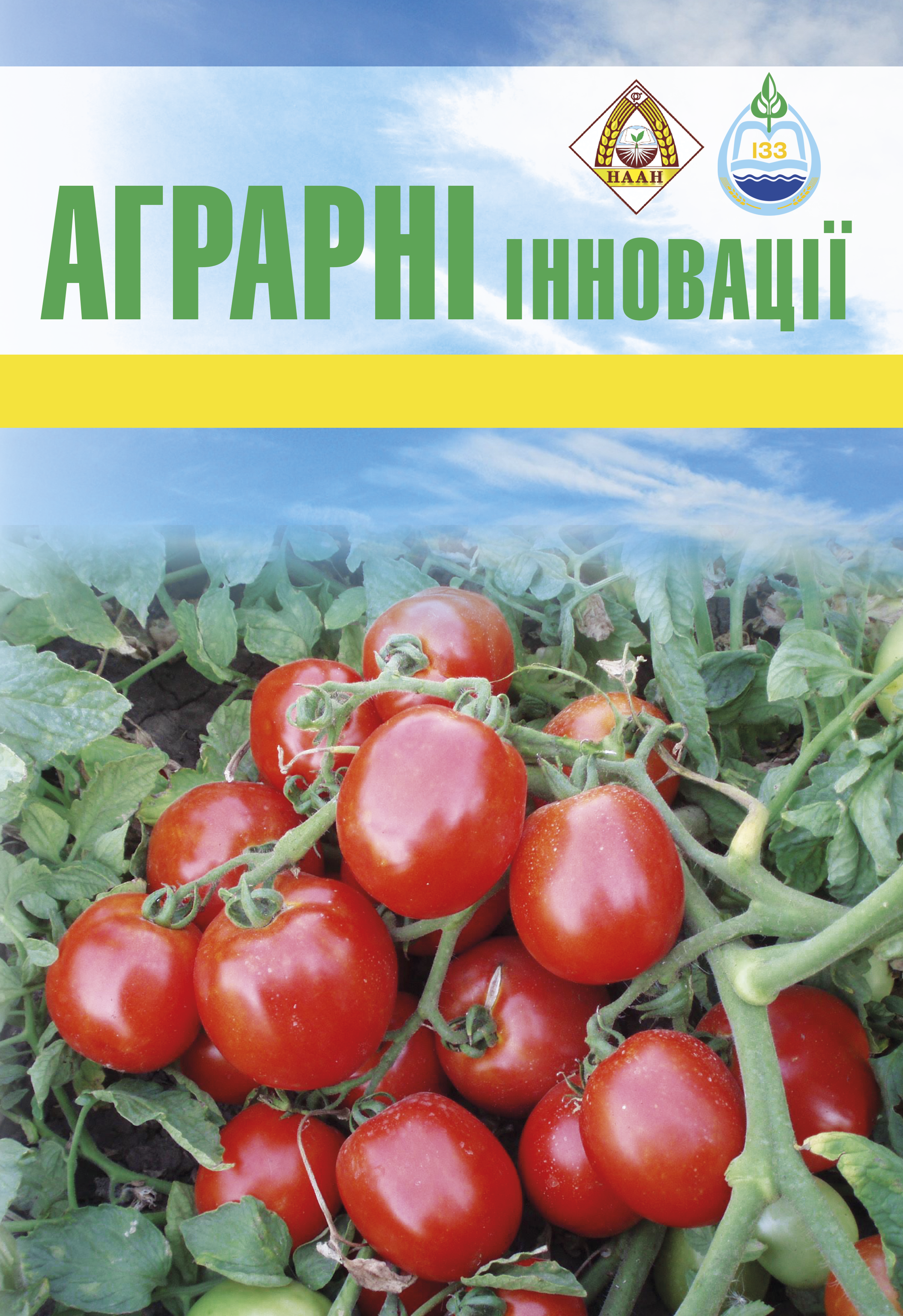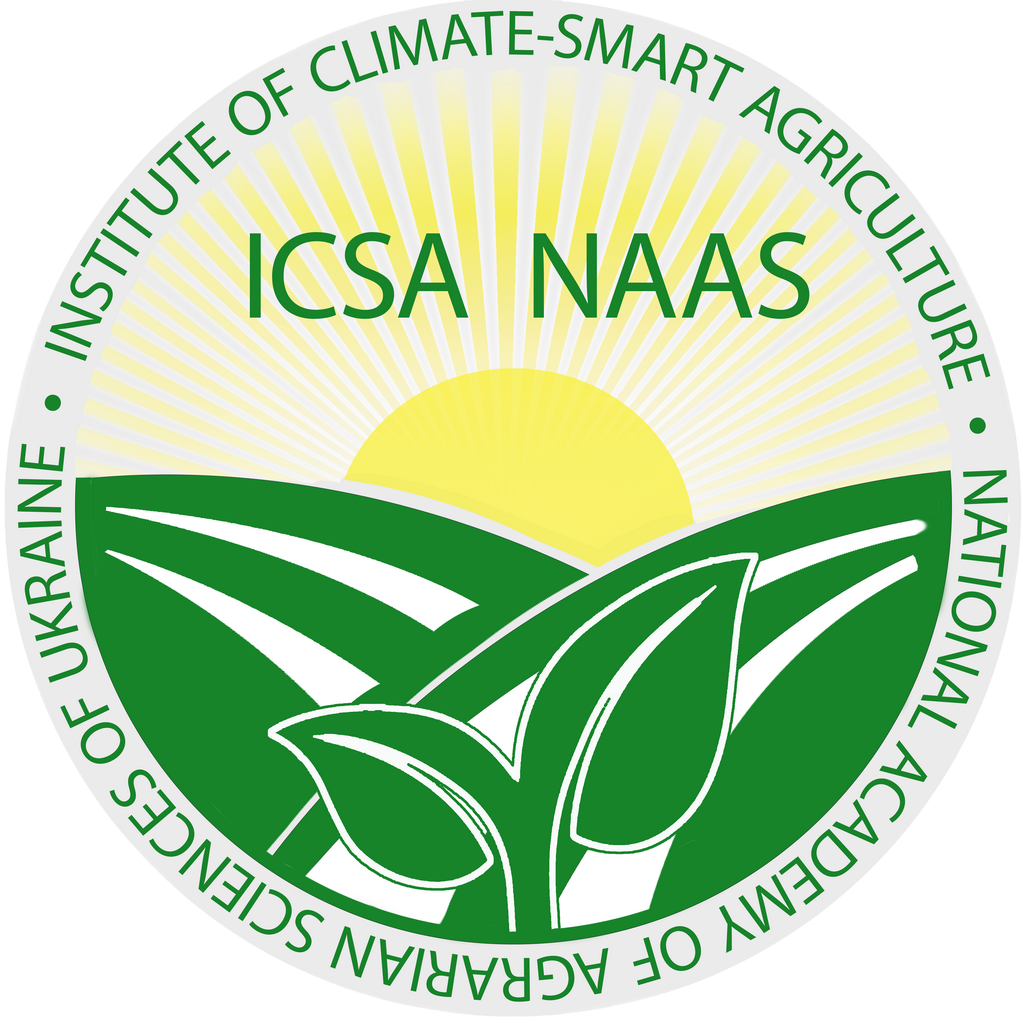The effectiveness of microfertilizer application in foliar feeding of soybeans
Abstract
Purpose. Study of the effectiveness of using highlyconcentrated microfertilizers in foliar feeding of soybeans,their impact on the formation of indicators of individualplant productivity and seed yield in the conditions of theWestern Forest-Steppe. Methods. The following methodswere used in conducting the research: field, measurement,calculation and comparison, analysis, and statistical.Results. The conducted studies have established the positiveeffect of foliar top dressing with highly concentratedliquid fertilizers in the phase of 4–5 trifoliate leaves andthe beginning of flowering on the formation of indicatorsof individual productivity of soybean plants and yield. Itwas found that two-time foliar feeding of soybean crops(in the phase of 4–5 leaves and the beginning of flowering)contributed to an increase in the number of productivebeans per plant of the Siverka variety by 7.0–18.9%,the number of seeds per plant by 7.7–21.7%, the weightof seeds per plant by 11.3–28.2%, and the weight of1000 seeds by 2.8–11.7% compared to the control. In thePallada variety, the number of beans and seeds per plantincreased by 4.7–28.8% and 3.7–28.4%, and the weight ofseeds per plant and the weight of 1000 seeds increasedby 7.1–37.1% and 3.1–12.8%, respectively. On average,over the years of research, two-time foliar feeding of soybeancrops with highly concentrated liquid fertilizers in the4–5 leaf phase and the beginning of flowering ensuredan increase in the productivity of the Siverka variety from2.75 t/ha in the control to 2.82–3.01 t/ha in the studied variantsor by 2.5–9.5%, in the Pallada variety – from 2.67 t/hato 2.73–2.92 t/ha or by 2.2–9.4%. Conclusions. The best indicators of individual productivity and seed yield of thesoybean varieties studied were obtained when using thehighly concentrated liquid fertilizer Khimik Bor for foliarfeeding. In particular, the number of productive beans perplant increased by 18.9% in the Siverka variety, by 28.8%in the Pallada variety, and the number of seeds by 21.7 and28.4%, respectively, compared to the control. The weightof seeds from one plant increased in the Siverka variety by28.2%, in the Pallada variety by 37.1%, and the weight of1000 seeds by 11.7 and 12.8%, respectively, compared tothe control. The yield of seeds increased by 9.5 and 9.4%,respectively.
References
2. Дідур І. М. Вплив інокуляції та позакореневих підживлень на тривалість вегетації та динаміку густоти рослин сої в умовах Лісостепу Правобережного. Таврійський науковий вісник. Серія: Сільськогосподарські науки. 2023. № 130. С. 50–56. DOI https://doi.org/10.32851/2226-0099.2023/130.8
3. Довбиш Л. Л., Можарівська І. А., Корбут Б. О., Бойко І. Ю. Вплив борвмісних добрив на продуктивність зерна сої в умовах Лісостепу Житомирської області. Таврійський науковий вісник. Серія: Сільськогосподарські науки. 2023. № 134. С. 53–58. DOI https://doi.org/10.32851/2226-0099.2023/134.8
4. Дудка А. А., Мельник А. В. Сортові особливості формування продуктивності сої залежно від норм добрив та позакореневого підживлення в умовах Лівобережного Лісостепу України. Вісник Сумського національного аграрного університету. Серія «Агрономія і біологія». 2023. Випуск 2 (52). С. 28–37. DOI https://doi.org/10.32782/agrobio.2023.2.4
5. Івасик М. В., Бахмат М. І. Підвищення продуктивності зерна сої в умовах Поділля. Подільський вісник: сільське господарство, техніка, економіка. 2022. Випуск 2(37). С. 51–57. DOI: https://doi.org/10.37406/2706-9052-2022-2-8
6. Климчук М. Ефективність позакореневого підживлення сої у Західному регіоні України. Техніко-технологічні аспекти розвитку та випробування нової техніки і технологій для сільського господарства України. 2020. Вип. 27(41). С. 192–201. DOI:10.31473/2305-5987-2020-2-27(41)-17.
7. Міленко О. Г., Сідаш А. А., Вегеренко В. С., Безпелий А. М., Гордівський І. В. Ефективність позакореневого підживлення посівів сої. Scientific Progress & Innovations. 2024. № 27 (1). С. 53–57. doi: 10.31210/spi2024.27.01.09
8. Петриченко В. Ф., Лихочвор В. В., Іванюк С. В., Корнійчук О. В., Колісник С. І. та ін. Соя: монографія. 2016. Вінниця: «Діло». 400 с.
9. Рожков А. О., Пузік В. К., Каленська С. М. та ін. Дослідна справа в агрономії: навчальний посібник. Книга 1 – Теоретичні аспекти дослідної справи. Харків: «Майдан», 2016. 314 с.
10. Рожков А. О., Пузік В. К., Каленська С. М. та ін. Дослідна справа в агрономії: навчальний посібник. Книга 2 – Статистична обробка результатів досліджень. Харків: «Майдан», 2016. 340 с.
11. Чумак А. Бор у вирощуванні сої. Пропозиція. 2017. № 6. С. 88–89.
12. Чумак А., Довгаюк-Семенюк М. Молібден та соя: можливості й проблеми. Пропозиція. 2017. № 2. С. 98–102.
13. Шепілова Т. П., Петренко Д. І., Лещенко С. М., Васильковська К. В., Ковальов М. М. Науково обґрунтована оптимізація агротехніки вирощування сої. Scientific Progress & Innovations. 2023. № 26 (2). С. 56–59. doi: 10.31210/spi2023.26.02.10






